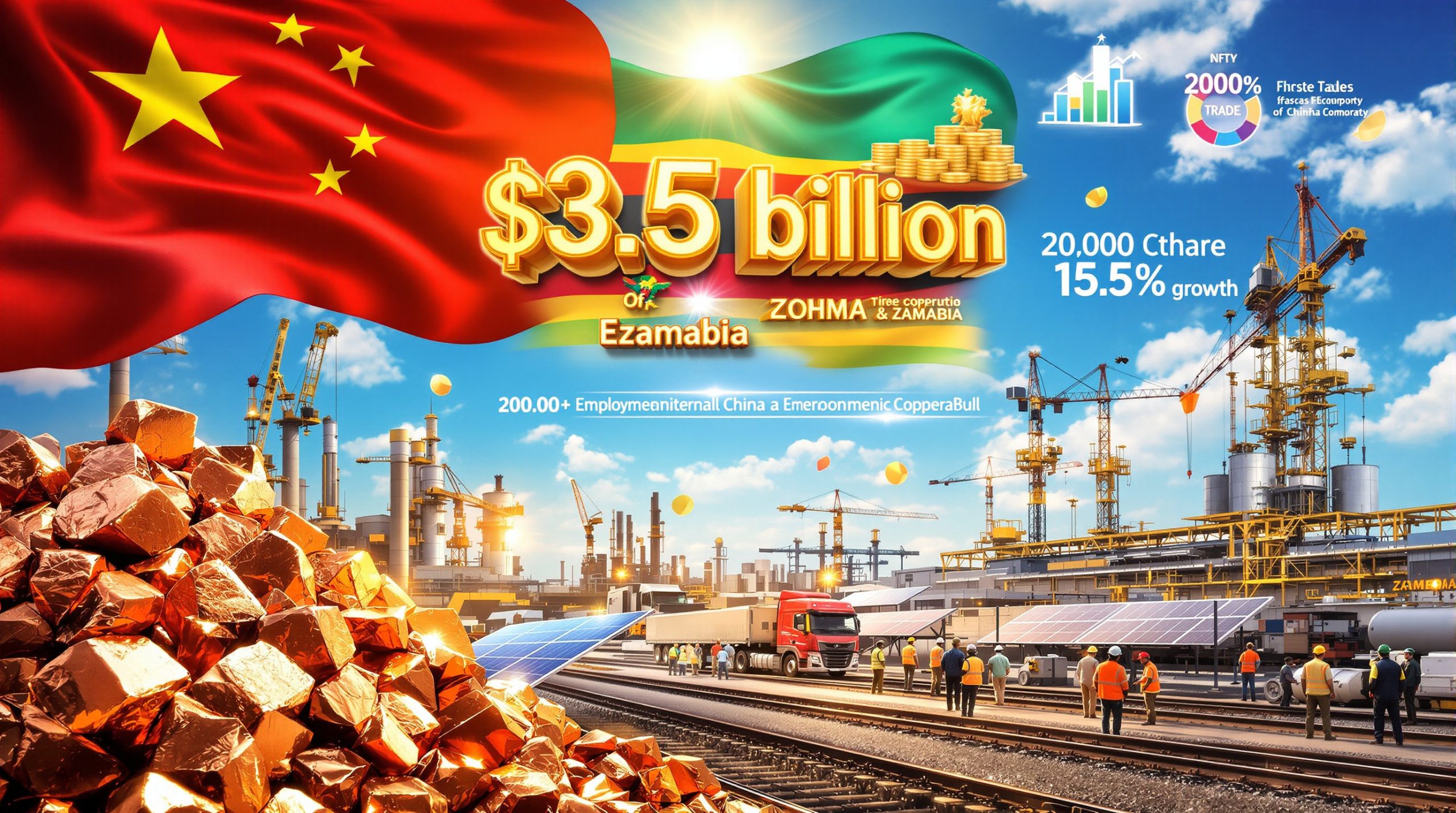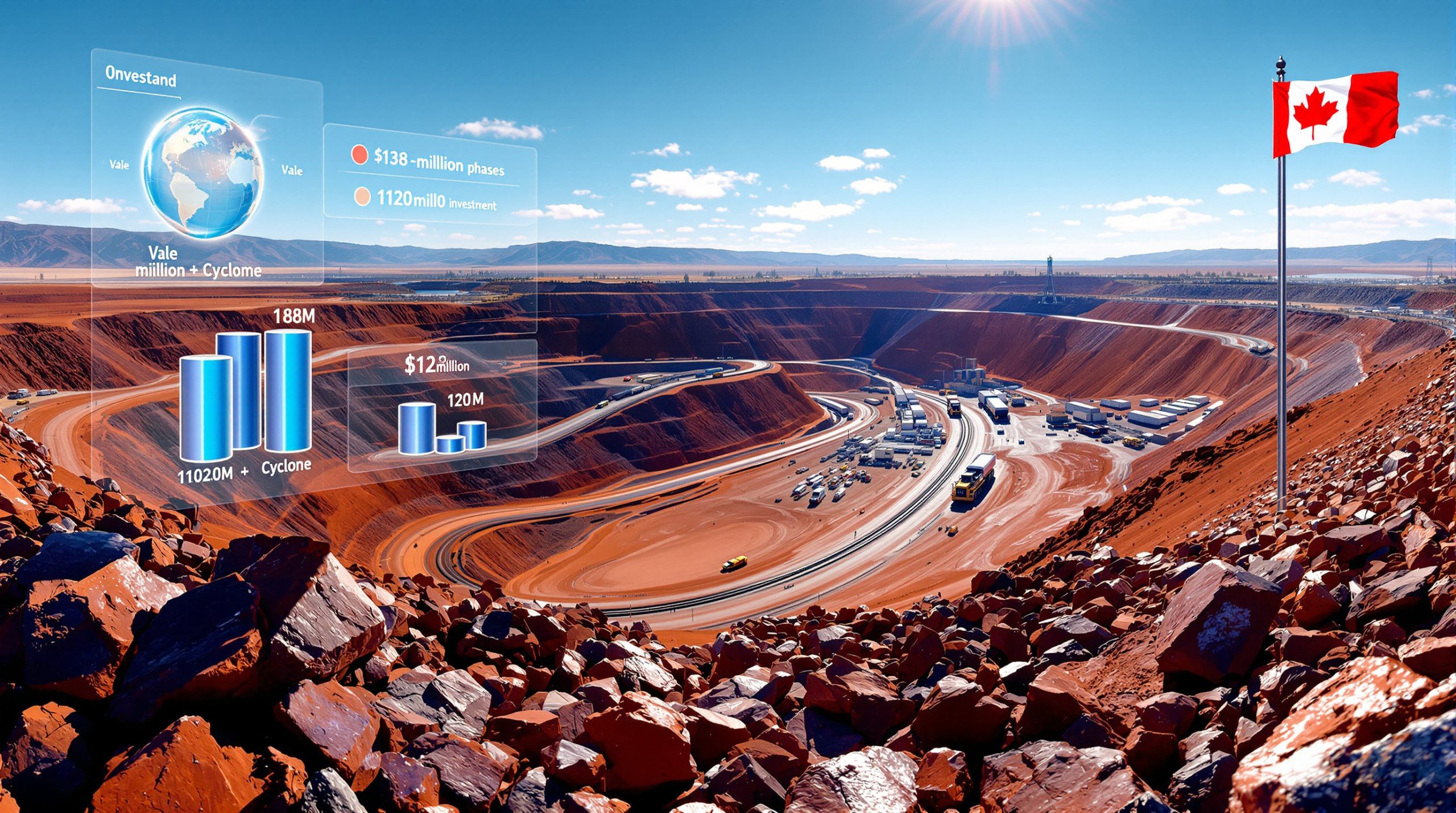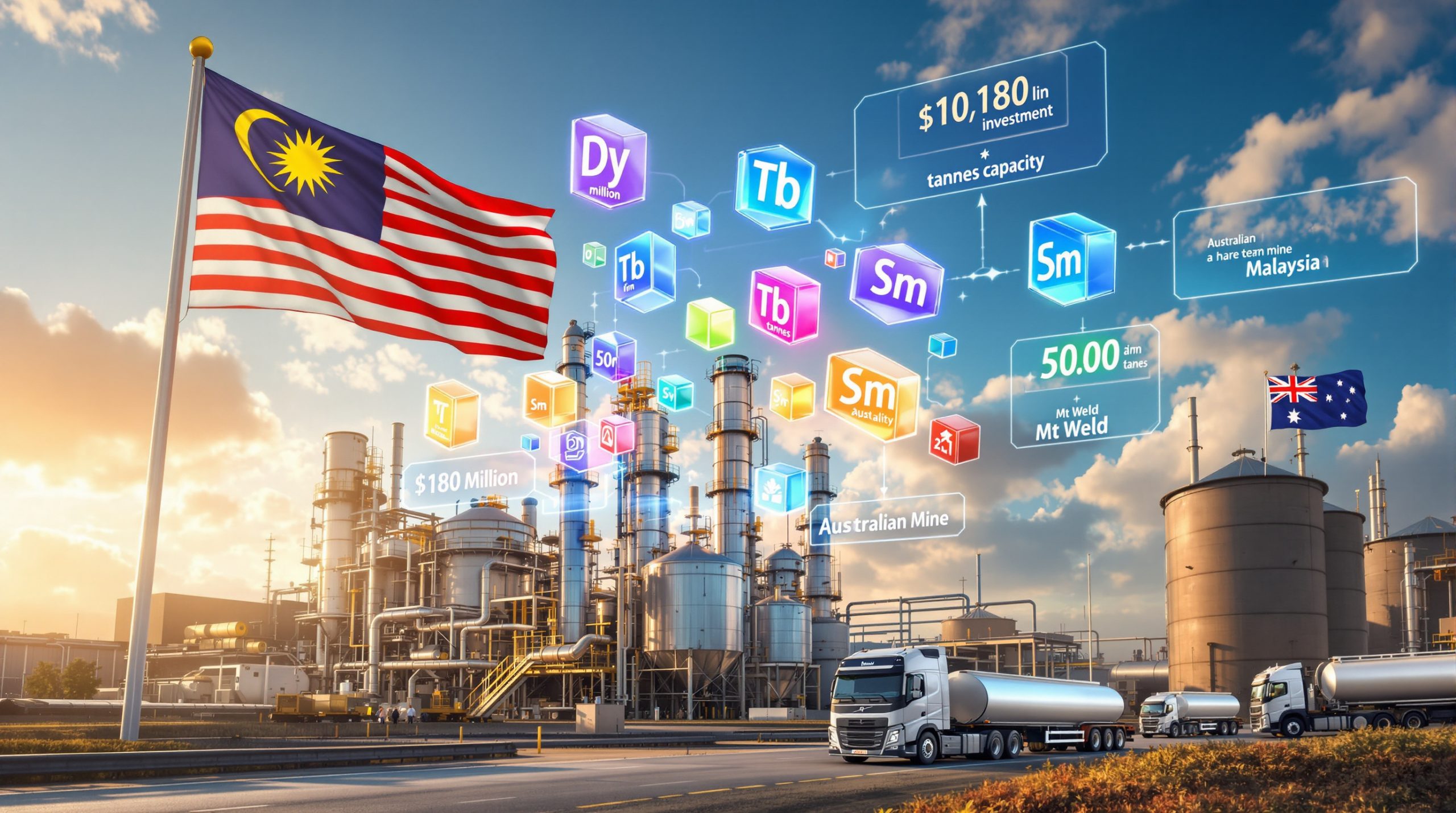What is the Trump-Ukraine Minerals Deal?
The Trump-Ukraine Minerals Deal represents a pivotal strategic partnership focused on rare earth elements, currently facing unexpected delays in its finalization. According to recent statements from former President Trump on his Truth Social platform, Ukrainian President Volodymyr Zelenskyy has not signed the final papers on this critical agreement, despite three weeks passing beyond the expected timeline.
This proposed minerals partnership carries significant implications for both nations. For the United States, it serves as a crucial component in a broader strategy to reduce dependence on Chinese critical mineral export restrictions. For Ukraine, the deal offers potential economic revitalization for its mining sector even as the country continues to navigate the challenges of ongoing conflict.
Background of the Rare Earths Agreement
The agreement centers on rare earth elements—a group of 17 metals that, despite their name, are relatively abundant in the Earth's crust but rarely found in concentrated, economically viable deposits. These elements have become increasingly vital to modern technology, featuring prominently in everything from smartphones and electric vehicles to advanced military systems.
The urgency behind this deal stems from China's dominant position in the global rare earth supply chain. Currently, China controls over 60% of global rare earth mining operations and a staggering 85% of processing capacity—a situation that creates significant strategic vulnerabilities for Western nations, particularly the United States.
"Ukraine has not signed the final papers on the very important Rare Earths Deal," Trump stated, highlighting the agreement's significance in his administration's resource security strategy.
Strategic Importance of Rare Earth Minerals
Rare earth elements like neodymium, dysprosium, and terbium may not be household names, but they are essential components in technologies that define modern life. Neodymium magnets power electric vehicle motors and wind turbines. Dysprosium enables heat-resistant magnets in defense systems. Europium provides the red color in television and computer screens.
The strategic vulnerability created by concentrated supply chains became starkly apparent in 2010, when China restricted rare earth exports to Japan during a territorial dispute. This single action caused rare earth prices to spike by 300% in some cases—with neodymium jumping from approximately $40/kg to nearly $240/kg. This historical precedent continues to inform U.S. policy on critical minerals.
The Trump administration's focus on Ukraine as an alternative supply partner reflects a recognition that mineral security is national security. By developing Ukraine's rare earth potential, the U.S. aims to create a more resilient supply chain less susceptible to geopolitical shift strategies.
Why is the Ukraine Minerals Deal Delayed?
The three-week delay in finalizing the Trump-Ukraine Minerals Deal raises questions about the obstacles preventing its completion. While Trump has publicly urged immediate signature of the agreement he describes as "very important," no official explanation for the holdup has been provided by Ukrainian officials.
Current Status According to Trump
Trump's Truth Social statement offers the most current public assessment of the deal's status, confirming that as of late April 2025, the agreement remains in limbo despite apparently being ready for final signatures. The unusual step of making such diplomatic matters public suggests a level of frustration with the pace of negotiations.
The deal appears to be fully drafted and awaiting only final approval from Kyiv. Trump's public pressure tactic—rare in delicate international negotiations—indicates the strategic priority his administration places on securing alternative rare earth supplies.
Potential Factors Behind the Delay
Several factors likely contribute to Ukraine's hesitation in finalizing the agreement. Foremost among these is the ongoing conflict with Russia, which necessarily dominates Ukraine's political attention and resources. Security concerns around mining operations in potentially unstable regions may also be complicating finalization.
Internal Ukrainian politics likely play a role as well. Any agreement involving national resources must navigate complex stakeholder interests, environmental considerations, and sovereignty concerns. For a war-strained government, the capacity to simultaneously manage military operations and negotiate complex resource agreements presents significant challenges.
Economic terms may also be under negotiation. Ukraine faces the difficult task of balancing immediate financial needs against long-term national interests in its mineral wealth. Questions around revenue sharing, processing capabilities, and technology transfer are common sticking points in international resource agreements.
Resource allocation during wartime presents another challenge. Developing rare earth mining operations requires significant infrastructure investment at a time when Ukraine's economy faces unprecedented pressure from defense spending.
How Does This Connect to Peace Negotiations?
In the same statement addressing the minerals deal delay, Trump made the notable claim that work on an "overall Peace Deal" is "going smoothly"—a statement that explicitly links economic agreements with broader diplomatic efforts to resolve the Russia-Ukraine conflict.
Trump's Statement on Russia-Ukraine Peace Process
Trump's assertion about peace negotiations progressing smoothly, despite the minerals deal delay, suggests a multi-track diplomatic approach where economic and security discussions operate in parallel. This strategy reflects a pragmatic recognition that post-war economic viability is essential to any sustainable peace framework.
By publicly connecting these issues, Trump signals that economic partnership forms a key pillar in his administration's approach to Eastern European stability. The rare earths deal potentially serves as both incentive and foundation for broader cooperation—demonstrating tangible U.S. commitment to Ukraine's economic future beyond military aid.
Strategic Timing and Diplomatic Context
The timing of the minerals agreement alongside peace talks appears strategically calculated. Resource security agreements often function as diplomatic leverage in international negotiations, providing economic incentives that can help break deadlocks on more contentious security issues.
This approach positions the United States as both security provider and economic partner for Ukraine. By offering pathways to economic development through strategic mineral partnerships, American diplomacy creates incentives for conflict resolution beyond simply ending hostilities.
The deal's framework likely considers post-conflict scenarios, potentially establishing investment commitments that would activate fully once peace is secured. This forward-looking economic diplomacy aligns with established peacebuilding frameworks that emphasize economic reconstruction as essential to preventing conflict recurrence.
What Are the Global Implications of the Deal?
The Trump-Ukraine Minerals Deal extends far beyond a bilateral economic agreement, potentially reshaping global commodities market insights and geopolitical power balances in an era of increasing resource competition.
Impact on Rare Earth Markets
If successfully implemented, this agreement could mark the beginning of meaningful diversification in global rare earth supply chains. The market implications would be significant—potentially moderating China's ability to use rare earth exports as geopolitical leverage and stabilizing prices for these critical inputs.
The 2010 China-Japan dispute demonstrated how quickly rare earth markets can destabilize when dominated by a single supplier. When China restricted exports, neodymium prices increased sixfold in a matter of months. Such volatility creates enormous challenges for industries dependent on these materials, from renewable energy to defense manufacturing.
However, market diversification faces significant challenges. New rare earth projects typically require 7-10 years from discovery to production, with processing capabilities taking even longer to develop. Any Ukraine-based supply would not immediately offset Chinese dominance but would represent a crucial long-term strategic investment.
Geopolitical Significance
The minerals deal exists within a broader context of U.S.-China strategic competition for critical resources. This competition has intensified in recent years, with Trump policy impact drawing criticism from China as "unlawful"—highlighting how resource acquisition has become a flashpoint in great power rivalry.
For Ukraine, successfully developing its rare earth potential would provide not just economic benefits but also enhanced geopolitical significance, positioning the country as a critical node in Western supply chains. This status could attract additional investment and diplomatic support beyond the immediate conflict resolution efforts.
The agreement also signals a potential reshaping of global resource "spheres of control," moving away from the post-Cold War concentration of critical mineral processing in China toward a more distributed model. This shift aligns with broader Western efforts to reduce strategic vulnerabilities in supply chains for critical technologies.
What Are Ukraine's Rare Earth Resources?
While Ukraine is not traditionally recognized as a rare earth powerhouse, geological surveys indicate significant untapped potential that could prove strategically valuable in diversifying global supply chains.
Ukraine's Mineral Potential
Ukraine's most promising rare earth deposits are located in the Azov Sea region, with additional potential resources in the Dnipro and Donetsk areas. Initial assessments suggest Ukraine may possess approximately 500,000 metric tons of rare earth oxides—modest compared to China's estimated 44 million tons, but still significant enough to impact global markets if developed.
The country's Soviet-era geological surveys identified numerous deposit areas, many of which have remained largely unexplored using modern techniques. Contemporary analysis methods could potentially identify more extensive resources than previously documented.
Ukraine's deposits appear to contain valuable heavy rare earth elements (HREEs) like dysprosium and terbium, which command higher market prices due to their scarcity and critical applications. These elements are particularly valuable for high-temperature magnets used in electric vehicles and wind turbines.
Investment and Development Considerations
Developing Ukraine's rare earth potential would require substantial capital investment—likely exceeding $1 billion for mining operations and an additional $2-3 billion for processing facilities. The technical challenges are equally significant, as rare earth extraction and processing involve complex chemical procedures with potential environmental impacts.
Processing capacity represents the most critical bottleneck. While mining rare earths is challenging, separating and processing them into usable oxides involves hundreds of chemical processes. Currently, China dominates this technical capability, with few facilities outside its borders capable of processing rare earths to required specifications.
Environmental considerations add another layer of complexity. Rare earth processing typically generates acidic wastewater and radioactive waste from thorium and uranium often found alongside rare earth deposits. Any development agreement would need to address these concerns through robust environmental protection frameworks.
Security concerns for mining operations in conflict-adjacent regions present perhaps the most immediate challenge. Mining infrastructure represents vulnerable, high-value targets that would require significant protection measures in Ukraine's current security environment.
FAQ About the Trump-Ukraine Minerals Deal
What specific rare earth elements are covered in the agreement?
While the full details remain confidential, the agreement likely focuses on elements most critical to U.S. technology and defense applications. These typically include:
- Neodymium and praseodymium: Essential for powerful permanent magnets used in electric vehicles, wind turbines, and defense systems
- Dysprosium and terbium: Critical for heat-resistant magnets in high-performance motors and military applications
- Europium and yttrium: Used in phosphors for displays and lighting technologies
These elements face particularly severe supply constraints, with the U.S. currently relying on imports for approximately 80% of its needs, primarily from China. American defense systems alone require thousands of tons of rare earth materials annually, making supply security a national priority.
How might this deal affect global rare earth prices?
Based on historical precedents, the mere announcement of potential supply diversification could moderate price volatility in rare earth markets. When Japan announced investments in non-Chinese rare earth sources following the 2010 dispute, prices stabilized despite limited immediate production changes.
Long-term price impacts would depend on actual production volumes and processing capacity development. If Ukrainian production reaches significant scale—perhaps 5-10% of global supply—it could help prevent future price spikes during supply disruptions.
Market response would likely vary by element. Heavy rare earths like dysprosium, which face the most severe supply constraints, would see the greatest price impact from new production sources.
What are the economic benefits for Ukraine?
The potential economic benefits for Ukraine extend beyond direct mining revenues. A fully developed rare earth sector could generate:
- Annual export revenue potentially reaching $500 million to $1 billion at full production
- Creation of 2,000-5,000 direct jobs in mining and processing operations
- Development of technical expertise in high-value mineral processing
- Attraction of additional foreign investment in related sectors
- Economic diversification beyond traditional agricultural and industrial sectors
Perhaps most significantly, establishing Ukraine as a strategic mineral supplier would strengthen its economic and political relationships with Western nations, potentially accelerating its integration into European economic structures.
The agreement likely includes provisions for technology transfer and training programs that would build Ukraine's capacity to move up the value chain—eventually processing minerals rather than simply extracting them. This capability development represents perhaps the most valuable long-term economic benefit beyond immediate revenue streams.
The emerging commodity super cycle could further amplify the economic significance of this deal for both nations in the coming decades.
Are You Tracking ASX Mineral Discoveries for Maximum Returns?
Don't miss the next market-moving mineral discovery on the ASX. Discovery Alert's proprietary Discovery IQ model delivers instant notifications when significant discoveries are announced, giving you the edge to act before the broader market. Discover why major mineral discoveries can lead to exceptional returns by exploring our dedicated discoveries page.




